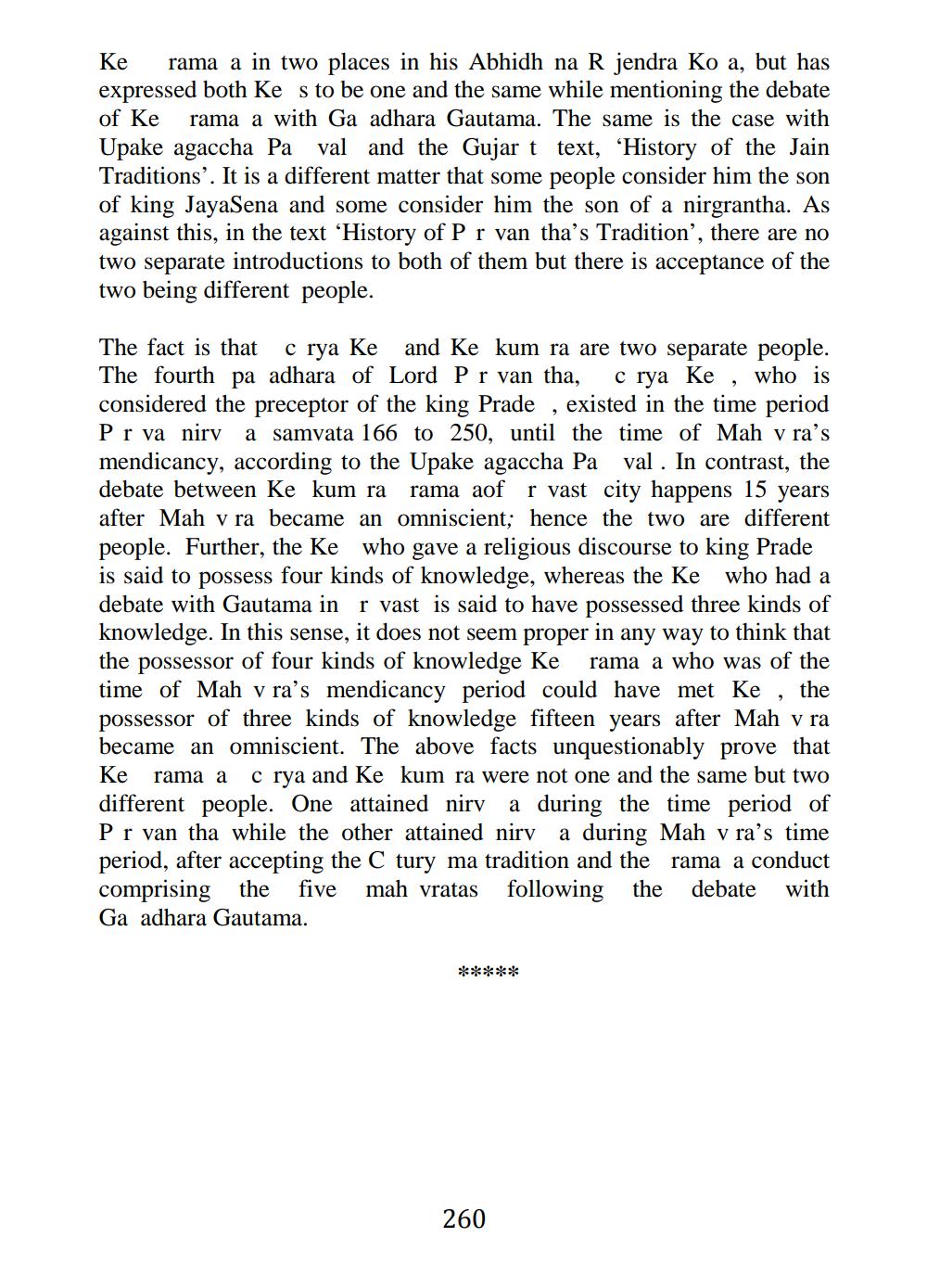________________
Kerama a in two places in his Abhidh na Rjendra Ko a, but has expressed both Ke s to be one and the same while mentioning the debate of Ke rama a with Ga adhara Gautama. The same is the case with Upake agaccha Pa val and the Gujart text, “History of the Jain Traditions'. It is a different matter that some people consider him the son of king JayaSena and some consider him the son of a nirgrantha. As against this, in the text 'History of P r van tha's Tradition', there are no two separate introductions to both of them but there is acceptance of the two being different people.
The fact is that crya Ke and Ke kum ra are two separate people. The fourth pa adhara of Lord P r van tha, crya Ke, who is considered the preceptor of the king Prade, existed in the time period Prva nirva samvata 166 to 250, until the time of Mah v ra's mendicancy, according to the Upake agaccha Pa val . In contrast, the debate between Ke kum ra rama aof r vast city happens 15 years after Mah v ra became an omniscient; hence the two are different people. Further, the Ke who gave a religious discourse to king Prade is said to possess four kinds of knowledge, whereas the Ke who had a debate with Gautama in r vast is said to have possessed three kinds of knowledge. In this sense, it does not seem proper in any way to think that the possessor of four kinds of knowledge Ke rama a who was of the time of Mah v ra's mendicancy period could have met Ke, the
kinds of knowledge fifteen years after Mah v ra became an omniscient. The above facts unquestionably prove that Ke rama a crya and Ke kum ra were not one and the same but two different people. One attained nirva during the time period of P r van tha while the other attained nirva during Mah v ra's time period, after accepting the C tury ma tradition and the rama a conduct comprising the five mah vratas following the debate with Ga adhara Gautama.
*****
260




